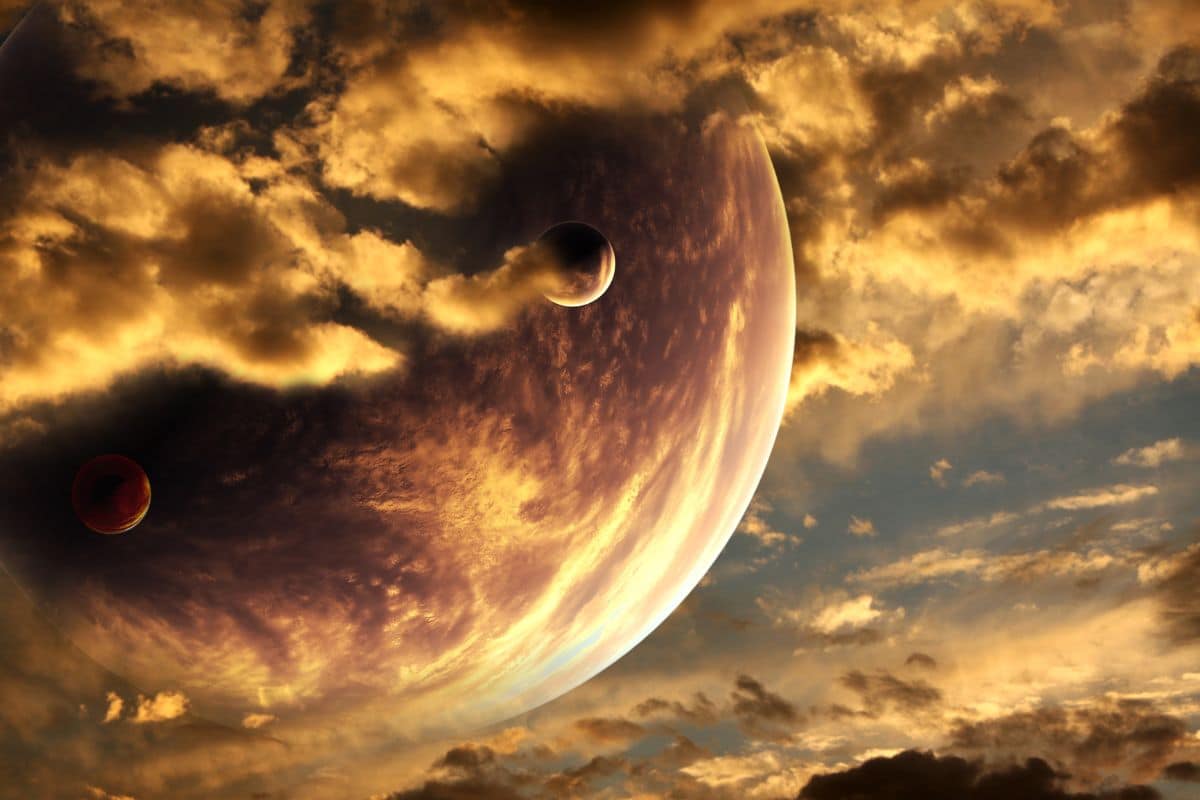

New research suggests that life may also arise on planets that are virtually unlike our own in any way.
The search for extraterrestrial life is in full swing. But then, where exactly should you look for those aliens? Of course, researchers first thought about this carefully and now the focus is on planets that are very similar to the Earth and, just like our planet, (appear to) harbor liquid water. That is a logical choice, because water has proven to be an essential element for the origin and maintenance of life as we know it. In fact, research has shown that life even originated in the oceans. No wonder that in the search for life, researchers are guided by the (potential) presence of water and especially look at planets where liquid water – just like on Earth – can survive (for a long time).
There are many more – maybe!
But in doing so, we may be overlooking many habitable planets, Swiss researchers now argue in the magazine Nature Astronomy† Using models, they show that liquid water – at least in theory – can also survive billions of years in a row on planets that are nothing like our own.
A primal atmosphere
“One of the reasons that the water on Earth is liquid is the Earth’s atmosphere,” said researcher Ravit Helled. “With the natural greenhouse effect, this (atmosphere, ed.) retains just enough heat to make oceans, rivers and rain possible.” But in the past, Earth’s atmosphere looked very different than it does today. “When the planet was formed from cosmic gas and dust, it amassed an atmosphere composed mainly of hydrogen and helium, a so-called ‘primal atmosphere’.” That atmosphere was lost during the further development of our planet.
But, Helled points out, other, larger planets can similarly amass much larger primordial atmospheres that can last considerably longer. “And such large primordial atmospheres can also have a greenhouse effect – just like the Earth’s atmosphere today. And so we wanted to find out if these atmospheres could create the conditions needed to make liquid water possible.”
Models
The researchers used models that described the development of various planets over a period of billions of years. Using these models, the researchers simulated the evolution of numerous planets, measuring the properties of the atmospheres of these planets, as well as the intensity of radiation from their parent stars and the amount of heat emitted from the interiors of the planets, each time. times varied. “What we saw was that in many cases the primordial atmospheres were lost due to the intense radiation of the star,” said researcher Marit Mol Lous. This was especially true for planets close to their parent star. “But in the cases where the atmospheres held out, the conditions could be favorable for liquid water.”
No mother star? No problem!
As mentioned, the researchers did not only look at the radiation from the parent star, but also at the heat that came from the interior of the simulated planets. The interior of the earth also gives off heat, but that geothermal heat has only a very small influence on the conditions at the earth’s surface. However, on planets with larger primordial atmospheres, the impact of that heat coming from within can be much greater. The researchers also saw this in their simulations. “In cases where enough geothermal heat reached the surface, radiation from a star like the Sun was not even necessary to create conditions on the surface under which liquid water could survive.”
In summary, liquid water – and with it life as we know it – is theoretically also possible on planets that are considerably larger than Earth and that have an extensive atmosphere with a very different composition from the Earth’s atmosphere. And to top it all off, a Sun-like mother star is not required either. In fact, “Based on our results, life could even arise on orphan planets that do not orbit a star,” said researcher Christoph Mordasini. The simulations also show that the conditions under which liquid water can survive on these non-Earth-like planets can last not for a short time, but for long periods – sometimes even tens of billions of years.
Surprise
“This will come as a surprise to many,” Mordasini thinks. “Astronomers typically expect that liquid water can exist in areas that receive just the right amount of radiation: not so much that the water evaporates, but not so little that water freezes.” But the new research cautiously suggests it’s not that close. “Since the availability of water is likely a prerequisite for life and life probably took millions of years to form on Earth, this could broaden the search for extraterrestrial life forms significantly,” Mordasini thinks.
At the same time, some caution is in order. “While our results are exciting, they should be taken with a grain of salt. To have liquid water for that long, planets have to have an atmosphere of the right size, and we don’t know how often that happens.” And even if it turns out that such planets are widespread, that doesn’t mean that life is. “It is unclear how likely it is that life will develop in such an exotic habitat – even if the conditions are favorable for it. That is a question for the astrobiologists.” In any case, pending an answer to that question, based on the new research, it seems wise to keep all options open and not to write off planets too quickly based on their non-Earth-like appearance.
Source material:
†Long-term liquid water also on non-Earth-like planets?” – University of Bern
Image at the top of this article: Frentusha from Getty Images (via Canva.com)